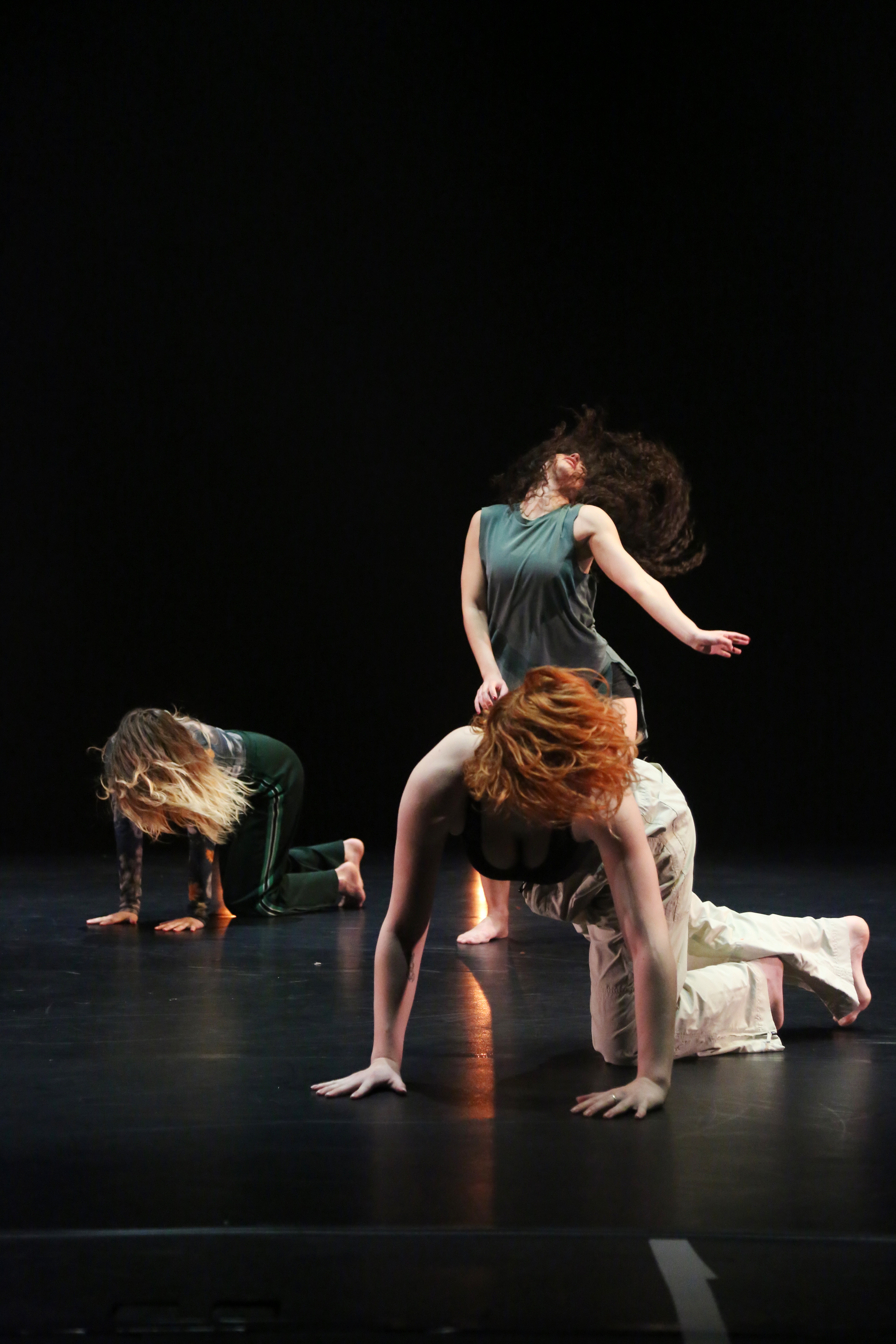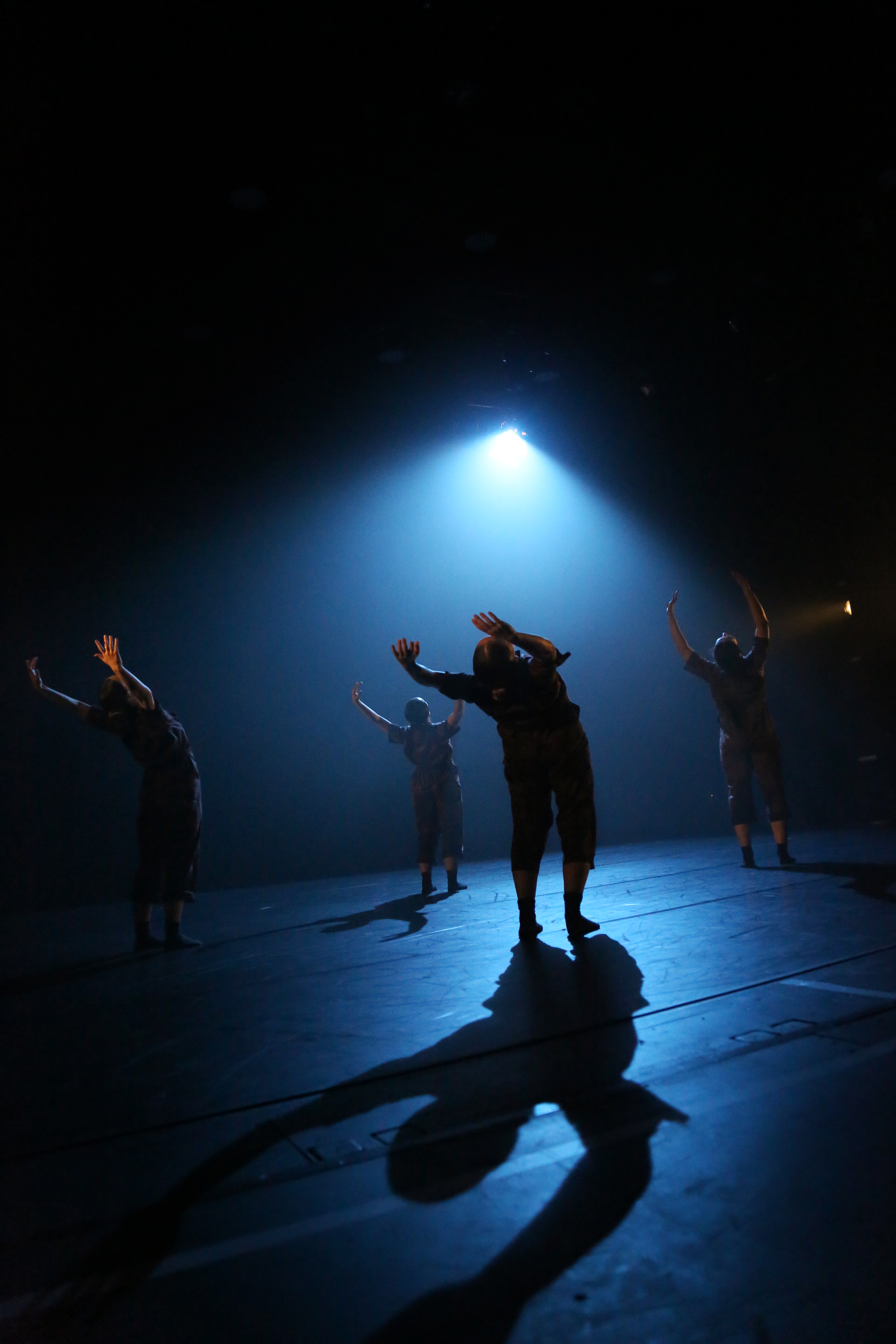Words by Inês Carvalho.
On Saturday (26 June), Emergence Dance live-streamed their 2021 Triple Bill. The postgraduate dance company of Joss Arnott Dance and the University of Salford worked with guest choreographers Becky Namgauds and Kevin Edward Turner during another year of additional challenges for the performing arts sector.
After a period of online rehearsals due to the lockdown, the international ensemble of young dancers were able to be back in the studio and – fortunately – on stage. Thanks to that, there is a common ground that remains throughout the entire performance: a celebration of resilience and an urgent need to keep dancing. This Triple Bill is a vivid, high-energy performance from the very beginning, which strongly resonates with the company’s tagline: Empowering the Future of Dance.
As soon as the live stream starts, we are introduced to the first piece, On A Warm Spring Night, by Becky Namgauds. The tile on the screen is replaced by the collective, whose breathing sounds take control of the action and lead the movement. The bodies are both restless and exhausted in a spiral of sequences where it seems impossible to find a balance. Namgauds collaborated with the dancers during the creative process to explore the urgency to move, especially when the mind is full of feelings and worries. Dance is the necessary tool to let it go; to find a balance in the middle of the chaos.

To the sound of ‘Higgs Boson Blues’, by Nick Cave & The Bad Seeds, the dancers start to emerge from the synchronised routine to start moving like they were at a party or a concert. Each one of them is now enjoying the music, transforming their movement into a celebration. There is joy, some euphoria in the air.
As the sound is fading out, screams echo on the screen and a sudden blackout interrupts this rave environment. Our need for movement is also suspended, waiting for the next piece to start.
The transition between the first and second parts is faster than we expect. A blue light fills the stage and colours the collective sequence. We immediately notice that all dancers are wearing the same uniform, empowering the synchronised movement. Only spontaneous solos give us glimpses of individuality. Kevin Edward Turner’s Dissents Cry brings a tone of order and power, as a creative reaction to the current times.
Working around the ideas of protest and activism, this piece questions the system of control and how individuals can break it and create a change. How does one break from uniformity and conformity to find one’s own identity, beliefs and unique experience? The dancers answer this question by contrasting the order and unity of the collective with solos and duos, taking control of the narrative. The energy is the only constant – each movement responds actively to the other one.
The final solo highlights this duality of the individual versus “the establishment”; the group starts passively but soon it takes over the scene, right before another surprising blackout that sets the ending of this never-ending exploration of a cry for change.
The third and the last part of the Triple Bill is choreographed by Joss Arnott. Wild Shadows – like the previous ones – presents a powerful piece that challenges technique and performance presence. A body emerges right from the centre of the stage. It is a dirty one filled with what seems to be earthy stains. Another body jumps into the scene and there is something animalesque about the way they ground their feet on the floor. They look at each other and their eye contact guides the duet – is it a way of interaction or intimidation?
Jumping around the concept of light and darkness, Joss Arnott was inspired by Robert Macfarlane’s book Underland. The dancers are challenged to explore each one’s unique journeys on Earth, which created multiple layers of the movement. There’s tension, lightness, resistance and pause. Everything is combined in duets and group sequences until some pauses suspend the energy. However, the intensity never disappears; and after each suspension, they are ready to start again.

The scene gets darker now during another solo scene. The rest of the dancers are still on stage, surrounding the soloist and observing the action. They look either to the dancer or to the dark space, in an attitude of searching. Another round of solos is succeeding after the first one, contrasting with the passive observers. As the music gets louder and the light stronger, the group gets active and steps into a circle, surrounding a solo happening in the centre. Their steps culminate in another energetic group sequence that finalises this 33 minutes of searching for hope and light.
It is inevitable to ask for more after the end of the live stream. This atmosphere of hope predicts a curious future for this group and a strong curiosity about what comes next. With a mission to inspire and empower emergent dance artists, Emergence Dance is expecting to tour next year, producing a brand new mixed bill with guest choreographers Kevin Finnan, Gosia Mielech and Vidya Patel.
Header image: Josh Hawkins
